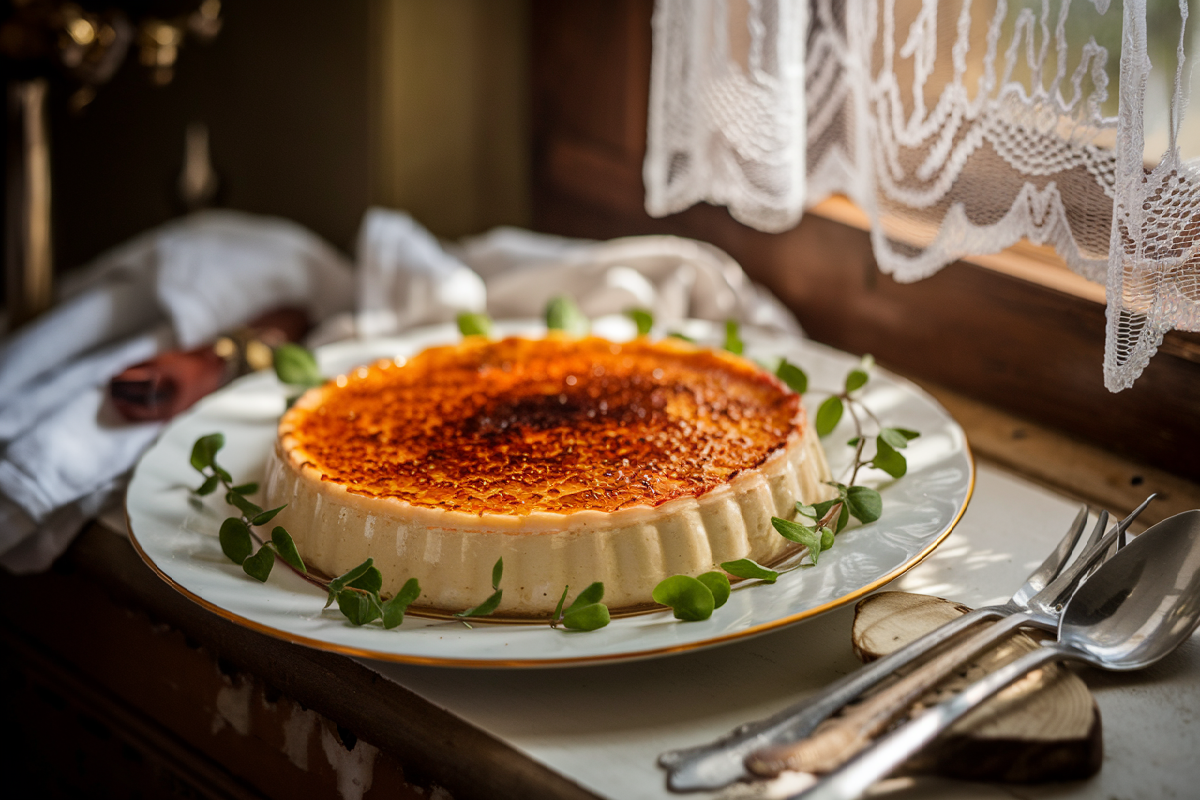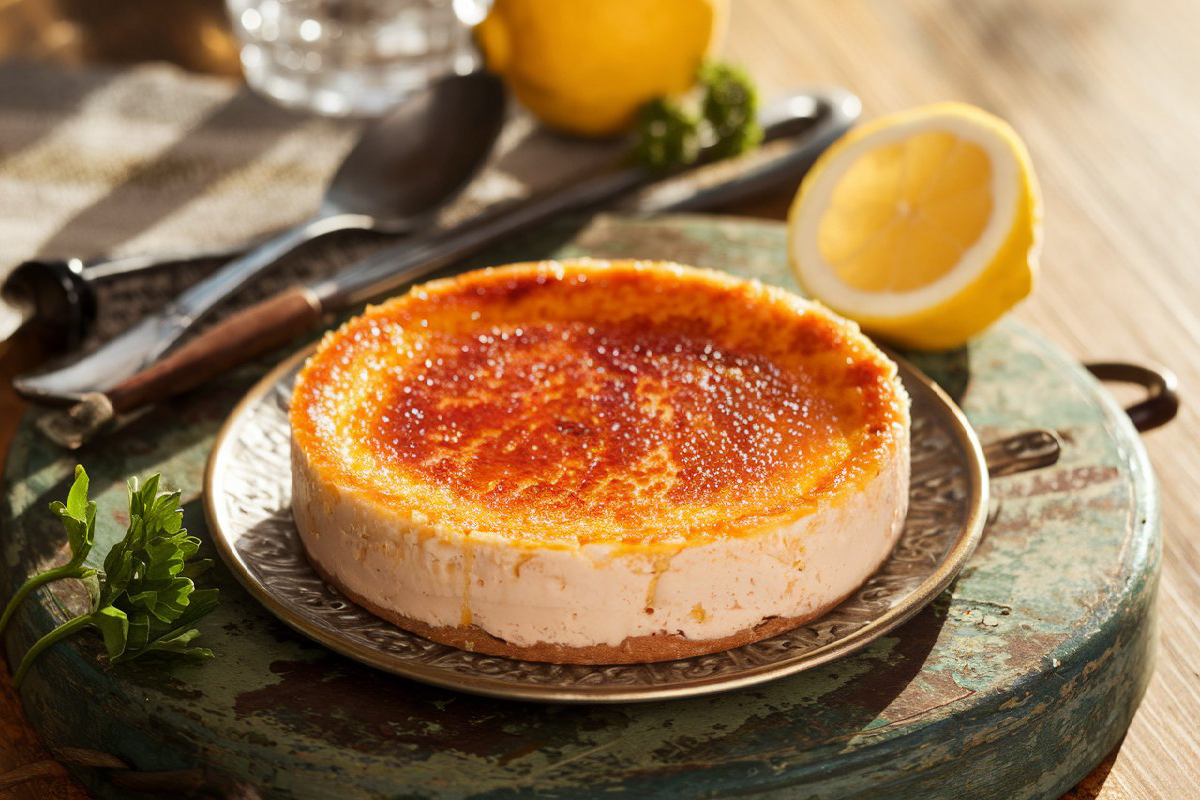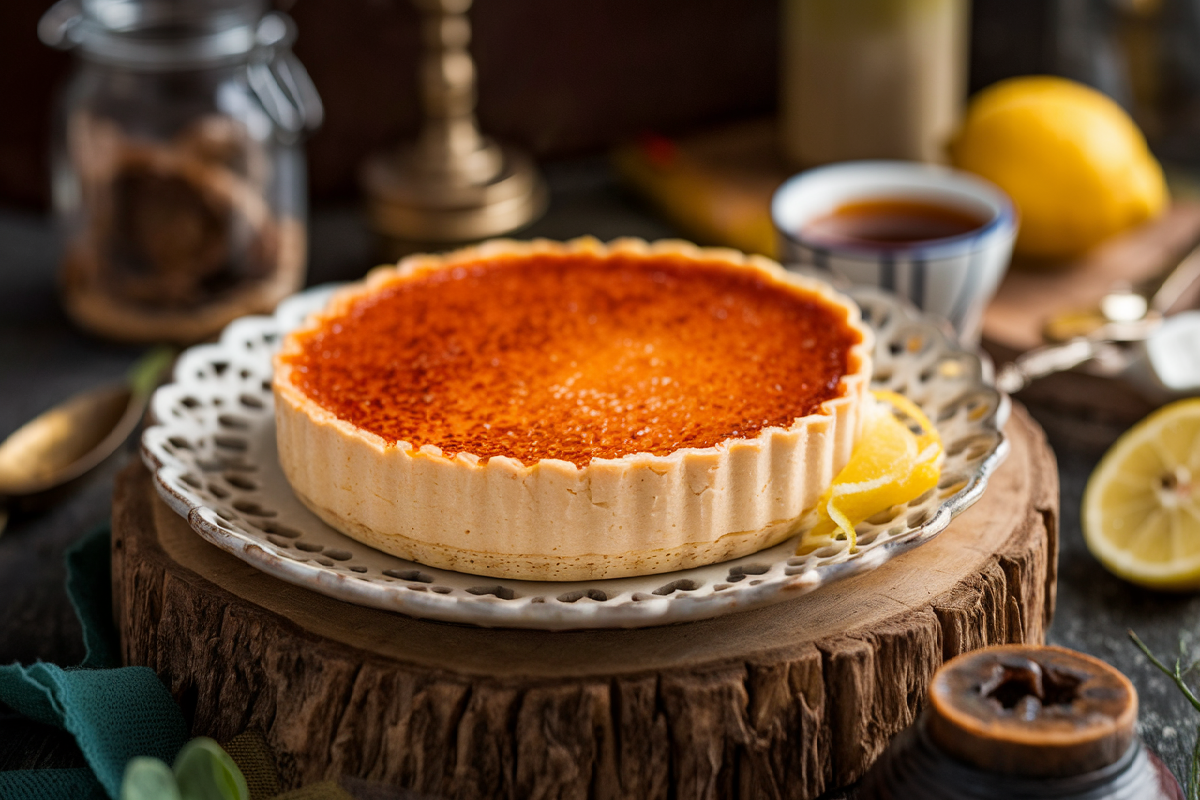Introduction to Crab Brulee Recipe
Crab Brulee Recipe is an innovative take on the traditional Creme Brulee, transforming a beloved dessert into a savory delight. This dish merges the creamy, silky texture of a classic brulee with the rich, delicate flavors of fresh crab meat. Whether you’re a seafood enthusiast or someone looking to impress with an unusual dish, Crab Brulee is sure to make a lasting impression.
History and Origin of Crab Brulee Recipe
While Creme Brulee has its origins rooted deeply in French cuisine, dating back to the 17th century, Crab Brulee is a more contemporary invention. The classic dessert, traditionally known for its rich vanilla custard and caramelized sugar topping, began to see savory variations as chefs worldwide started exploring the boundaries between sweet and savory. This shift towards experimentation is part of a broader trend in modern cuisine where traditional dishes are reimagined with new ingredients and flavors. The concept of using crab in a brulee likely emerged from regions where seafood is abundant, such as the coastal areas of France, the Mediterranean, and the United States.
For those interested in a deeper dive into the traditional Creme Brulee, the Creme Brulee Basics guide offers a comprehensive look at the origins and techniques of this classic dish.
Essential Ingredients for Crab Brulee Recipe

The success of Crab Brulee hinges on the quality of its ingredients. Each component plays a critical role in achieving the perfect balance of flavors and textures. Here’s a closer look at the ingredients you’ll need:
-
Crab Meat
- Crab meat is the star ingredient in this dish. Its subtle sweetness and delicate texture are what set this brulee apart from its sweeter counterpart. The best results are achieved using fresh crab meat, though canned or frozen crab can be substituted if necessary. However, fresh meat will provide a superior flavor that truly elevates the dish.
-
Heavy Cream
- The heavy cream is responsible for the luxurious, creamy texture of the brulee. It acts as the base of the custard, providing richness that complements the light, flaky crab meat. The cream should be of high quality to ensure the best possible mouthfeel.
-
Egg Yolks
- Egg yolks are essential for binding the ingredients together and giving the custard its smooth, silky consistency. They also contribute to the rich color and flavor of the brulee.
-
Seasonings
- Simple seasonings such as salt, pepper, and nutmeg enhance the natural flavors of the crab and cream. For those who enjoy a bit of heat, a pinch of cayenne pepper can be added to the mix. Additionally, Old Bay seasoning is a classic choice that complements seafood dishes beautifully.
-
Lemon Zest
- Adding lemon zest to the custard mix introduces a fresh, citrusy note that balances the richness of the dish. This ingredient is optional, but it can significantly brighten the overall flavor profile.
-
Herbs
- Fresh herbs like tarragon, dill, or chives add an aromatic element to the brulee. These herbs can be finely chopped and mixed into the custard or used as a garnish to enhance both flavor and presentation.
Selecting the right type of crab is crucial. For tips on choosing the best crab meat, consider exploring this Guide to Choosing Fresh Crab Meat.
Step-by-Step Guide to Making Crab Brulee
Creating Crab Brulee at home may seem intimidating, but with careful attention to detail, it can be quite straightforward. Here’s a detailed, step-by-step guide to help you through the process:
1. Preparation
- Preheat your oven to 320°F (160°C). This lower temperature is crucial for cooking the custard gently, ensuring it remains smooth and creamy.
- Separate the egg yolks from the whites and place the yolks in a mixing bowl. The yolks will form the base of your custard.
2. Heating the Cream
- In a saucepan, heat the heavy cream over medium heat until it just begins to simmer. Be careful not to let it boil, as this can cause the cream to curdle.
- Slowly pour the hot cream into the egg yolks, whisking continuously. This process, known as tempering, prevents the eggs from cooking too quickly and scrambling.
3. Adding Flavor
- Once the cream and egg yolks are fully combined, add your seasonings: salt, pepper, a pinch of grated nutmeg, and lemon zest if using.
- For a smoother texture, strain the mixture through a fine sieve into another bowl. This step removes any bits of cooked egg or zest.
4. Assembling the Brulee
- Place your ramekins in a deep baking dish. Divide the crab meat evenly among the ramekins, spreading it out to create a uniform layer.
- Pour the custard mixture over the crab, filling each ramekin nearly to the top. Leave a little space to prevent overflow during baking.
- Pour hot water into the baking dish until it reaches about one-third of the way up the sides of the ramekins. This water bath, or bain-marie, helps cook the custard evenly by insulating it from direct heat.
5. Baking
- Carefully transfer the baking dish to the preheated oven. Bake the custards for 35-40 minutes, or until they are set but still slightly jiggly in the center.
- Once baked, remove the ramekins from the water bath and let them cool to room temperature. Then, cover them with plastic wrap and refrigerate for at least 3 hours, or overnight. Chilling allows the flavors to meld and the custard to firm up.
6. Caramelizing the Sugar
- Just before serving, sprinkle a thin, even layer of sugar on top of each custard. Use a kitchen torch to melt the sugar, moving the flame in a circular motion to achieve an even, golden-brown crust.
- Allow the caramelized sugar to cool and harden for a minute before serving. The contrast between the crisp sugar topping and the creamy custard is one of the highlights of this dish.
For a more in-depth look at caramelization, check out these Caramelization Techniques.
Pro Tips for Perfect Crab Brulee Recipe

Achieving a flawless Crab Brulee requires a few tricks of the trade. Here are some expert tips to ensure your dish turns out perfectly every time:
-
Use Fresh Crab: Always opt for fresh crab meat whenever possible. The flavor is significantly better than canned or frozen crab, which can sometimes taste bland or metallic. Fresh crab brings a sweetness and depth that truly makes this dish stand out.
-
Avoid Overcooking: One of the most common mistakes when making any brulee is overcooking the custard. The key is to bake it until the edges are set, but the center still has a slight wobble. The custard will continue to cook as it cools, resulting in a perfectly smooth texture.
-
Cool Completely Before Caramelizing: Patience is key here. If you try to caramelize the sugar while the custard is still warm, you risk melting the custard and ruining its delicate texture. Make sure the brulee is thoroughly chilled before torching the sugar.
-
Experiment with Seasonings: Don’t be afraid to play around with the flavors. While the recipe calls for basic seasonings, you can customize your brulee with additional spices like smoked paprika or herbs such as basil or thyme to create your own signature version.
Creative Variations of Crab Brulee Recipe
While the traditional Crab Brulee is delightful on its own, there’s plenty of room for creativity. Here are some variations to consider:
Spicy Crab Brulee
For those who enjoy a bit of heat, adding spice can transform the dish:
-
Cayenne Pepper: Add a pinch of cayenne to the custard mixture for a subtle kick.
-
Hot Sauce: Stir in a few drops of your favorite hot sauce to intensify the flavors.
-
Spicy Garnish: Sprinkle a little crushed red pepper over the caramelized sugar for an extra zing.
Herbal Crab Brulee
Herbs can add a fresh, aromatic quality to your brulee:
-
Tarragon: This herb pairs beautifully with seafood, adding a slightly sweet, anise-like flavor.
-
Dill: A classic match for crab, dill adds brightness to the dish.
-
Chives: Chopped chives bring a mild onion flavor that complements the richness of the custard.
Cheese-Infused Crab Brulee
Incorporating cheese into your Crab Brulee can create a rich, indulgent experience:
-
Parmesan: Stir in grated parmesan for a nutty, savory flavor that enhances the crab.
-
Gruyère: This cheese melts beautifully and adds a depth of flavor that is both creamy and slightly tangy.
-
Cheddar: For a sharper flavor, mix in some aged cheddar, which pairs well with the sweetness of the crab.
Lemon and Herb Crab Brulee
For a fresher, lighter version of Crab Brulee, try incorporating lemon and herbs:
-
Lemon Zest and Thyme: This combination adds a bright, citrusy note with a hint of earthiness from the thyme.
-
Lemon Zest and Basil: Basil’s sweet, peppery flavor pairs wonderfully with lemon and seafood.
Serving Suggestions and Pairings
Crab Brulee can be served as an appetizer, a main course, or even a sophisticated brunch dish. Here are some pairing suggestions to elevate your dining experience:
-
As an Appetizer: Serve Crab Brulee in small ramekins as a starter for a fancy dinner party. Pair it with Cheesy Mashed Potatoes to add a comforting element to your meal.
-
As a Main Course: If serving as a main, consider pairing the brulee with a light, crisp salad dressed with lemon vinaigrette. The acidity of the vinaigrette will balance the richness of the custard.
-
With Wine: A crisp white wine like Sauvignon Blanc or Chardonnay pairs beautifully with the creamy texture and delicate flavor of the crab. If you prefer something sparkling, Champagne or a dry Prosecco can add a celebratory touch.
-
Accompanying Sides: Light, fresh sides like steamed asparagus, roasted cherry tomatoes, or a simple green salad can complement the brulee without overpowering it.
Common Mistakes to Avoid
Even experienced cooks can run into issues when making Crab Brulee. Here are some common mistakes and how to avoid them:
-
Overcooking the Custard: As mentioned earlier, overcooking can lead to a grainy, unpleasant texture. Always bake at a low temperature and check for doneness frequently.
-
Using Canned Crab: While canned crab is convenient, it often lacks the flavor and texture of fresh crab. If fresh isn’t available, frozen crab is a better alternative.
-
Skipping the Water Bath: The water bath is essential for cooking the custard evenly. Without it, the custard can overcook on the edges while remaining undercooked in the center.
-
Burning the Sugar: When caramelizing the sugar, use a gentle, sweeping motion with your torch. Holding it too close or in one spot for too long can result in burnt sugar, which will add a bitter taste to the dish.
FAQs about Crab Brulee Recipe
-
Can you use canned crab meat?
- Yes, but the flavor will not be as rich as when using fresh crab meat. If you must use canned crab, look for high-quality brands and drain the crab well before using.
-
How long can Crab Brulee be stored?
- Crab Brulee can be stored in the refrigerator for up to 2-3 days. Be sure to keep it covered to prevent the custard from absorbing other odors.
-
Can you freeze Crab Brulee?
- It’s not recommended to freeze Crab Brulee as the texture of the custard can be negatively affected. The freezing process can cause the custard to become watery or grainy.
-
What’s the best way to reheat Crab Brulee?
- Reheating Crab Brulee can be tricky. The best method is to warm it gently in a low oven (around 250°F) until just heated through. Avoid reheating in a microwave, as this can cause the custard to overcook or separate.
Conclusion

Crab Brulee offers a unique and luxurious twist on a classic dessert, blending the creamy texture of a brulee with the delicate, savory flavors of fresh crab. Whether served as an appetizer or a main course, this dish is sure to impress. The balance of flavors, from the richness of the custard to the sweetness of the crab and the crispness of the caramelized sugar, creates a harmonious and unforgettable dining experience.
For more seafood inspiration, consider trying out our Tangy Deviled Eggs with Relish, another dish that perfectly balances rich and tangy flavors.
By following this detailed guide, you’ll be well on your way to creating a Crab Brulee that not only tastes delicious but also looks stunning on the plate. Enjoy the process, experiment with flavors, and most importantly, savor every bite!

